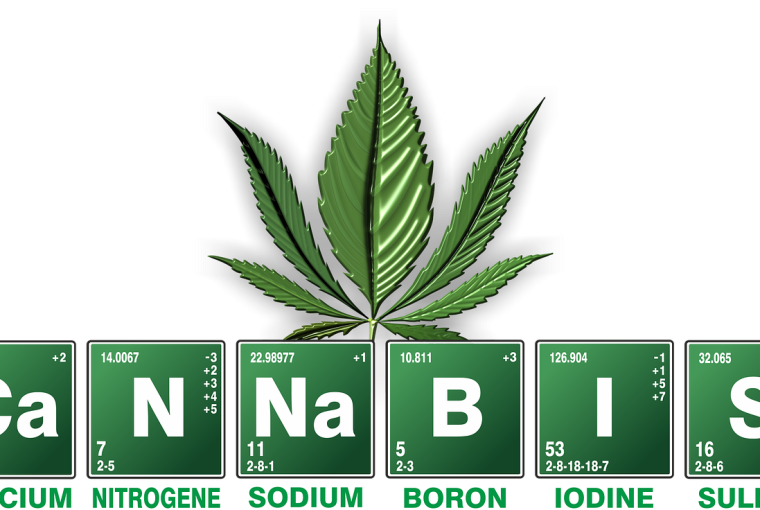Identifying quality cannabis is akin to appreciating fine art or a vintage wine; it requires an understanding of various sensory experiences and a keen eye for detail.
As the cannabis industry flourishes, consumers are presented with an overwhelming array of choices, making it imperative to discern the nuances that distinguish superior quality cannabis from its lesser counterparts. This guide delves into the art and science of decoding the aroma and visuals of cannabis, providing enthusiasts and connoisseurs alike with the knowledge needed to make informed decisions.
Understanding Cannabis Aromas
The aroma of cannabis is one of the most indicative factors of its quality and characteristics. Terpenes, the aromatic compounds found in cannabis, are responsible for its wide range of scents, from earthy and skunky to sweet and fruity.
These compounds do more than just determine the smell; they also contribute to the strain’s effects, making the aroma a crucial aspect to consider when identifying quality cannabis.
- Complexity and Intensity: High-quality cannabis typically exhibits a complex and robust aroma. This complexity is a sign of a rich terpene profile, which not only enhances the overall sensory experience but also indicates the plant was grown and cured under optimal conditions. Freshness is key, as the intensity of the aroma can diminish over time or if the cannabis has been improperly stored.
- Variety of Scents: Quality cannabis can present a wide array of scents, including but not limited to:
- Pine
- Citrus
- Berry
- Earth
- Diesel
The specific scent profiles can help identify the strain and its potential effects, as certain terpenes are associated with particular therapeutic benefits.
Visual Indicators of Quality
The visual appearance of cannabis provides a wealth of information about its quality, potency, and freshness. From the color and structure of the buds to the presence of trichomes, visual examination is a critical step in assessing quality.
- Color: High-quality cannabis should display a vibrant green color, with possible hues of purple, blue, or even orange and red, depending on the strain. The presence of brown or yellowing leaves can indicate poor quality, old age, or improper curing and storage.
- Trichome Coverage: Trichomes are the tiny, crystal-like structures on the surface of the buds that contain cannabinoids and terpenes. Abundant trichome coverage is a strong indicator of potency and quality. Under magnification, trichomes should appear clear or milky, signifying optimal maturity and potency. Overly amber trichomes, however, can suggest the plant was harvested too late.
The Importance of Structure and Density
The structure and density of cannabis buds are also telling signs of their quality. Well-cultivated and cured cannabis should have a certain degree of density and resilience, indicating healthy growth, and proper drying and storage processes.
- Bud Structure: Indica strains typically produce dense, tightly packed buds, while sativa strains may present a more open, fluffy structure. However, quality cannabis, regardless of its indica or sativa lineage, should not be excessively loose or airy, as this can suggest suboptimal growing conditions.
- Trimming: Attention to detail in the trimming process reflects the overall care taken during cultivation and post-harvest. Excess leaves left on the buds can detract from the smoking experience and may indicate a rushed or careless production process. Cleanly trimmed buds, where the trichome-covered flowers are prominent, are a hallmark of quality.
Integration of Aroma and Visual Cues in Quality Assessment
The intricate dance between the aroma and visuals of cannabis plays a pivotal role in the comprehensive evaluation of its quality.
This integration of sensory information is crucial for connoisseurs and casual users alike to discern the subtleties that distinguish premium cannabis from the average. Understanding how to synergize these observations allows for a nuanced appreciation and a more informed selection process.
- Synergy Between Aroma and Appearance: The aroma and visual cues of cannabis are not isolated quality indicators but complementary pieces of a larger puzzle. A strain that exudes a rich, complex aroma paired with a vibrant, trichome-rich appearance often signals a high-quality product. The terpenes responsible for the aroma also play a role in the strain’s therapeutic effects, while the visual aspects, such as trichome density and coloration, hint at the cannabinoid content and overall potency. Recognizing how these elements interact enhances the ability to judge the quality effectively.
- Confirming Freshness and Potency: Fresh, quality cannabis should have a strong, immediately noticeable smell indicating a high terpene content, which works in tandem with visible signs of freshness and potency, such as bright, vivid colors and ample trichome coverage. Cannabis that looks good but lacks a strong aroma, or vice versa, might not provide the optimal experience.
- Strain Identification and Experience Prediction: The combined assessment of aroma and visuals can aid in identifying strains and predicting the experience they may offer. For instance, a sweet, berry-like aroma coupled with purple hues suggests a strain that might offer relaxing effects, commonly associated with indicas or indica-dominant hybrids. Conversely, a strain with a citrusy aroma and lighter green coloration might lean towards the energizing effects typical of sativas.
- Practical Application in Selection: Integrating sensory evaluations into the selection process involves more than just acknowledging these cues individually; it requires an understanding of how they complement each other to form a coherent profile of the cannabis in question. Consumers should seek cannabis that not only appeals to their visual and olfactory senses but also aligns with their desired effects and experiences. This holistic approach to selection ensures a more satisfying and effective outcome.
Guidelines for Comprehensive Evaluation:
When evaluating cannabis, consider the following steps:
- First, visually inspect the cannabis for color vibrancy, trichome density, and overall bud structure.
- Next, assess the aroma for its intensity, complexity, and how pleasing it is to you personally.
- Finally, consider how these attributes correlate with the known effects and benefits of the strain’s genetic lineage or reported user experiences.
Conclusion
Decoding the aroma and visuals of cannabis is essential for anyone looking to appreciate and select the best possible product.
By understanding the subtleties of terpene profiles, recognizing the visual hallmarks of quality, and integrating these sensory evaluations, consumers can navigate the cannabis market with confidence. As the industry evolves, so too does the appreciation for cannabis quality, underscoring the importance of informed consumption in enhancing the overall experience.
For those interested in a deeper exploration of the specific scents and appearances characteristic of marijuana plants, including insights into different strain profiles and what they indicate about the plant’s properties, a detailed article is available here.
- Are Your Assets in Danger if Your Spouse Gets Into a Car Accident During Your Divorce? - July 23, 2024
- Breaking Down The Costs: How Much Does Crime Scene Cleanup Cost? - July 10, 2024
- Can Weed Make You Angry? - July 3, 2024









